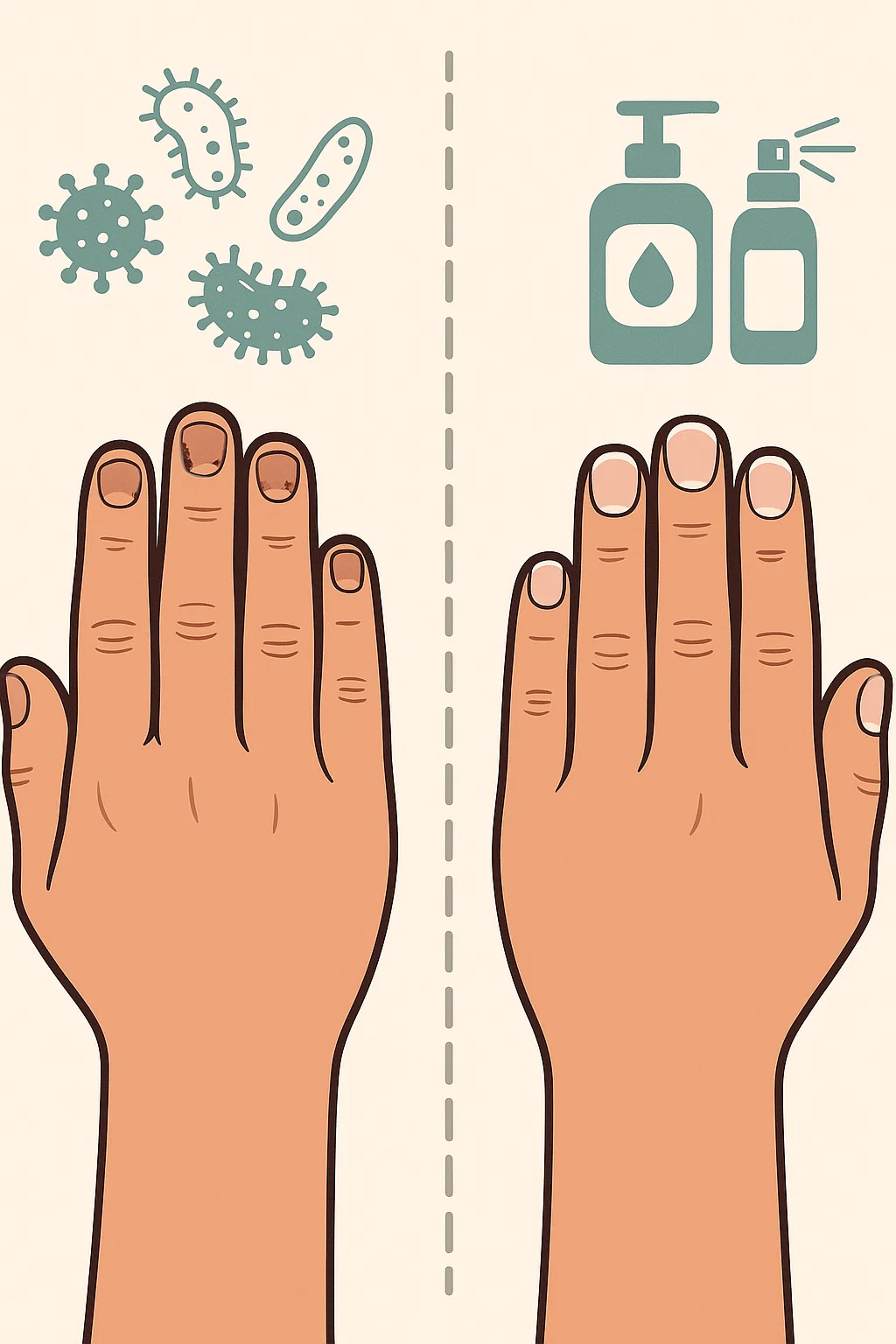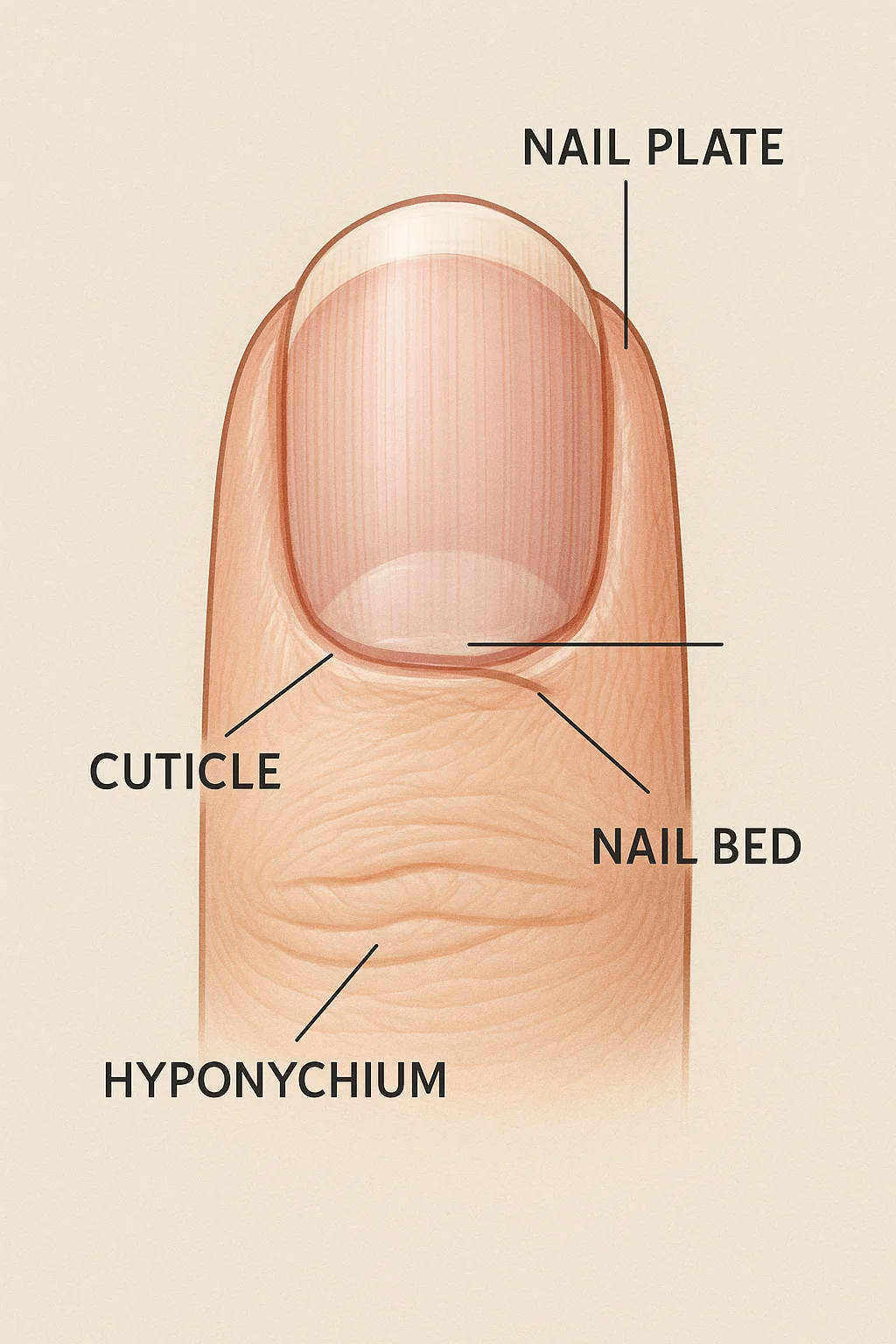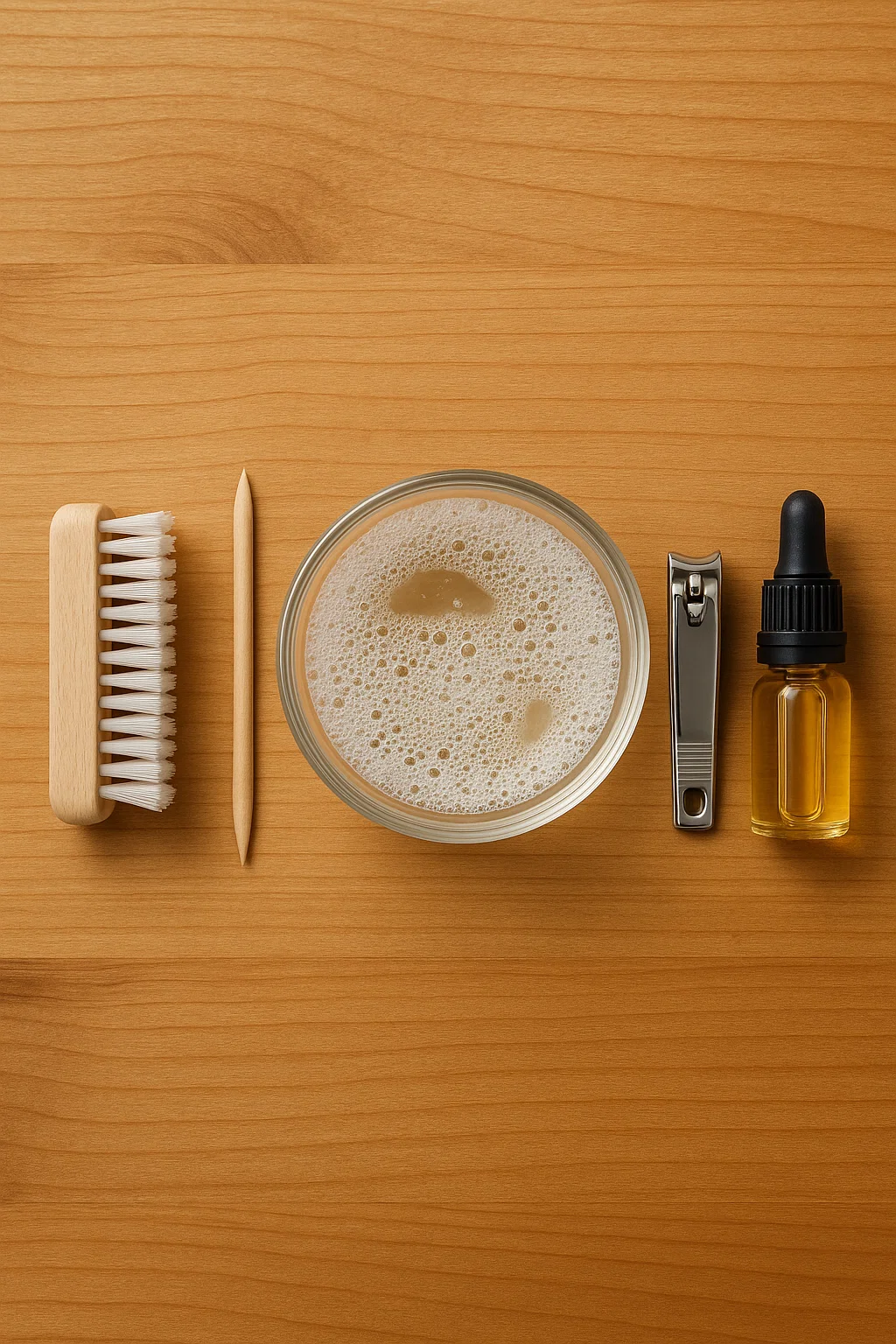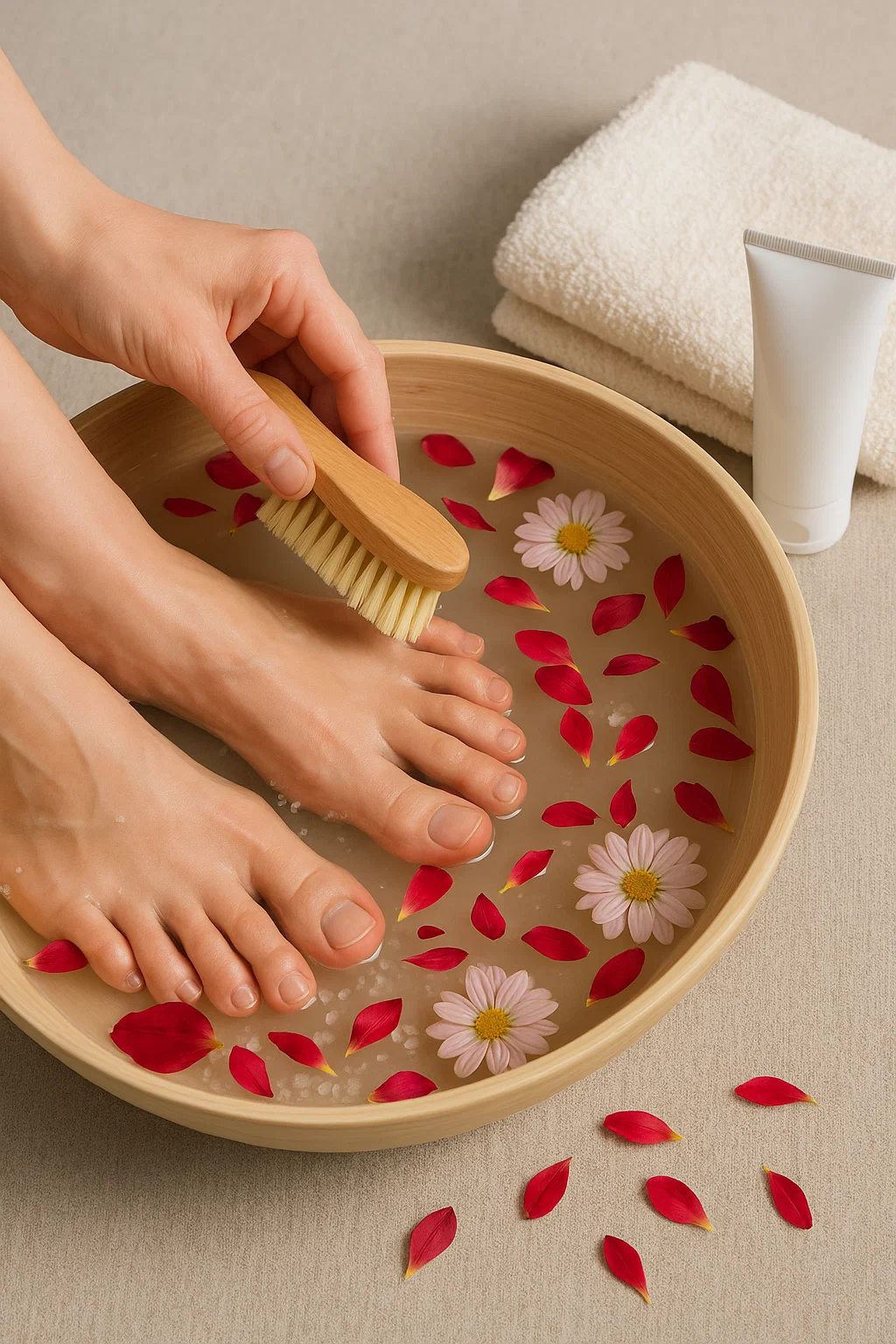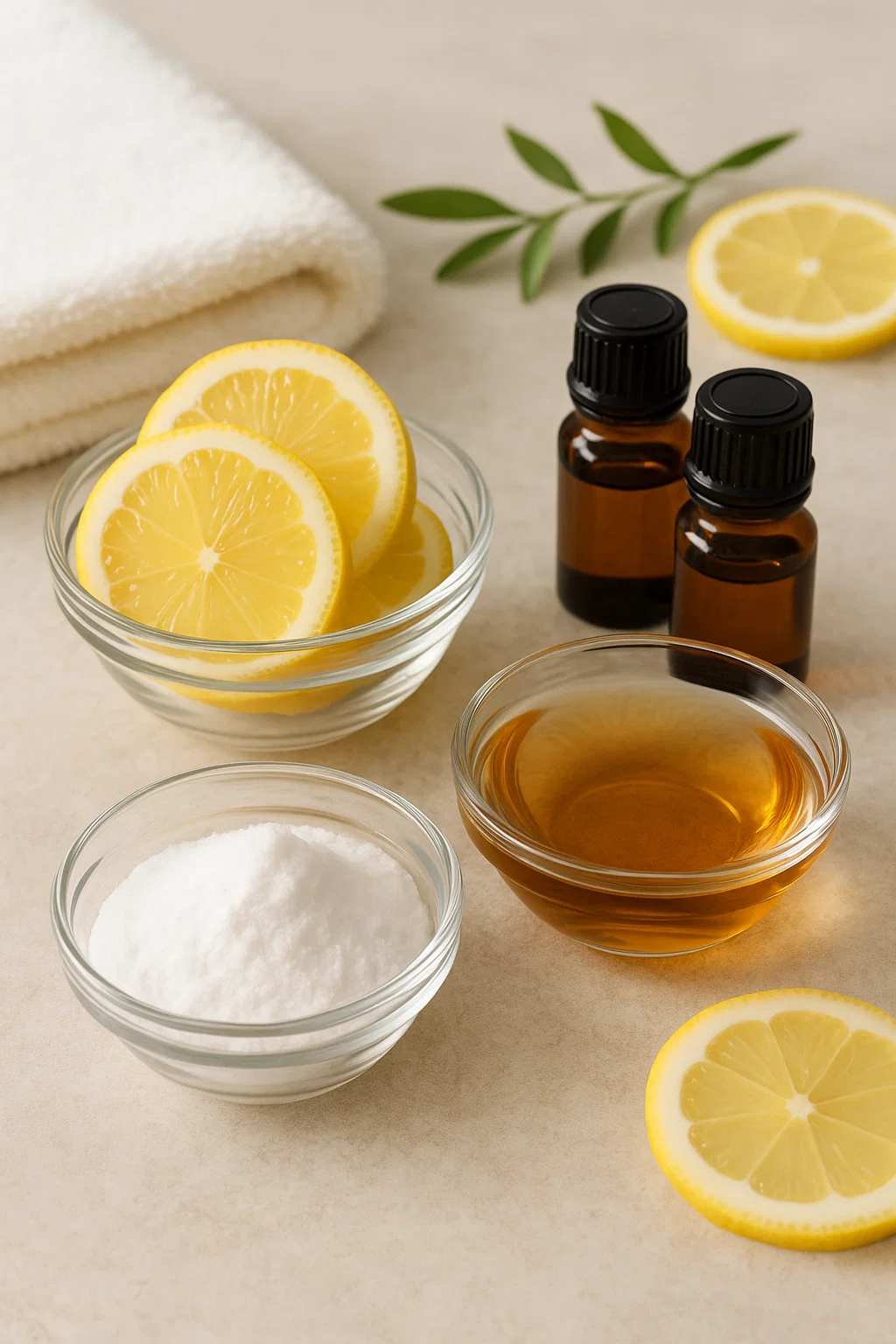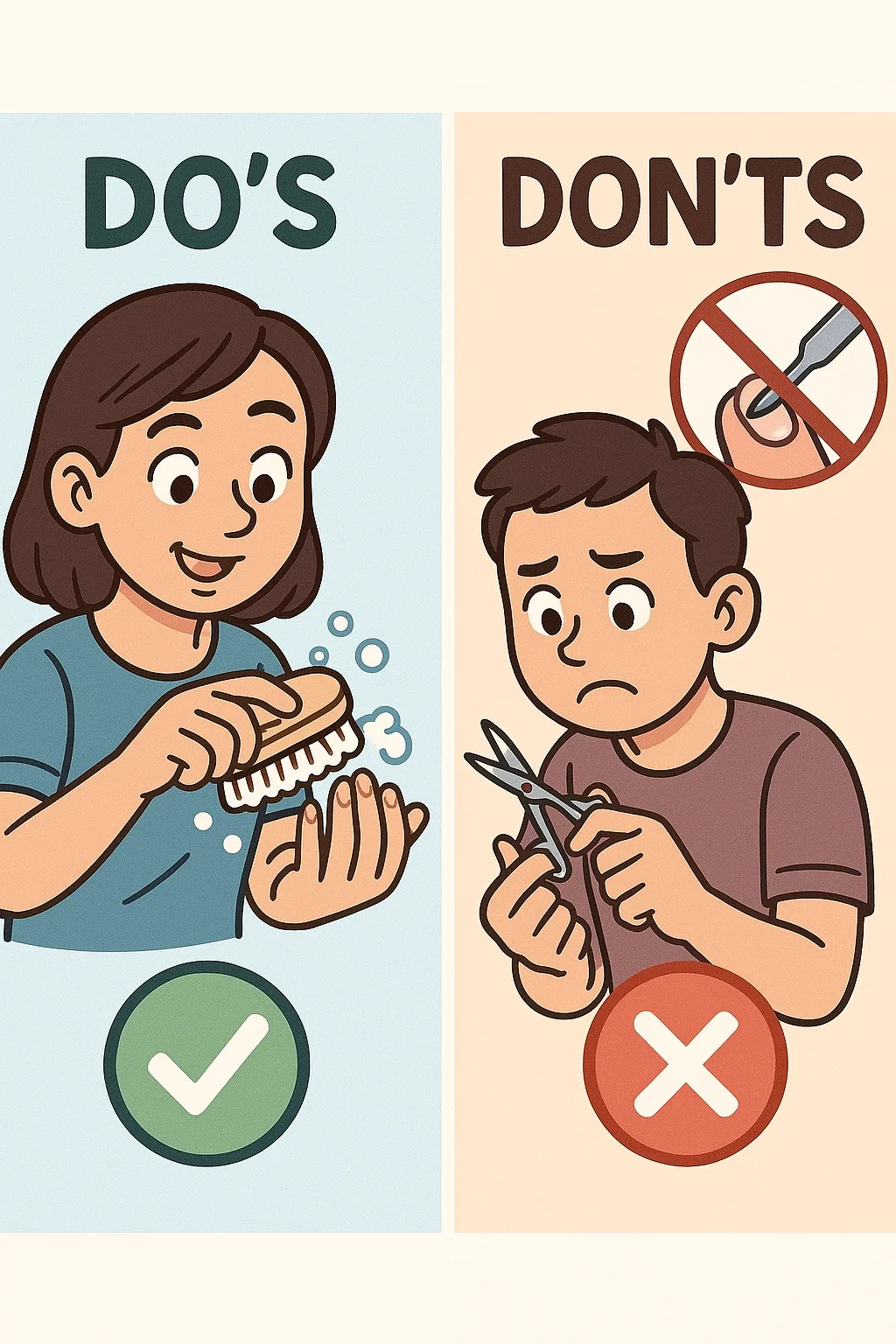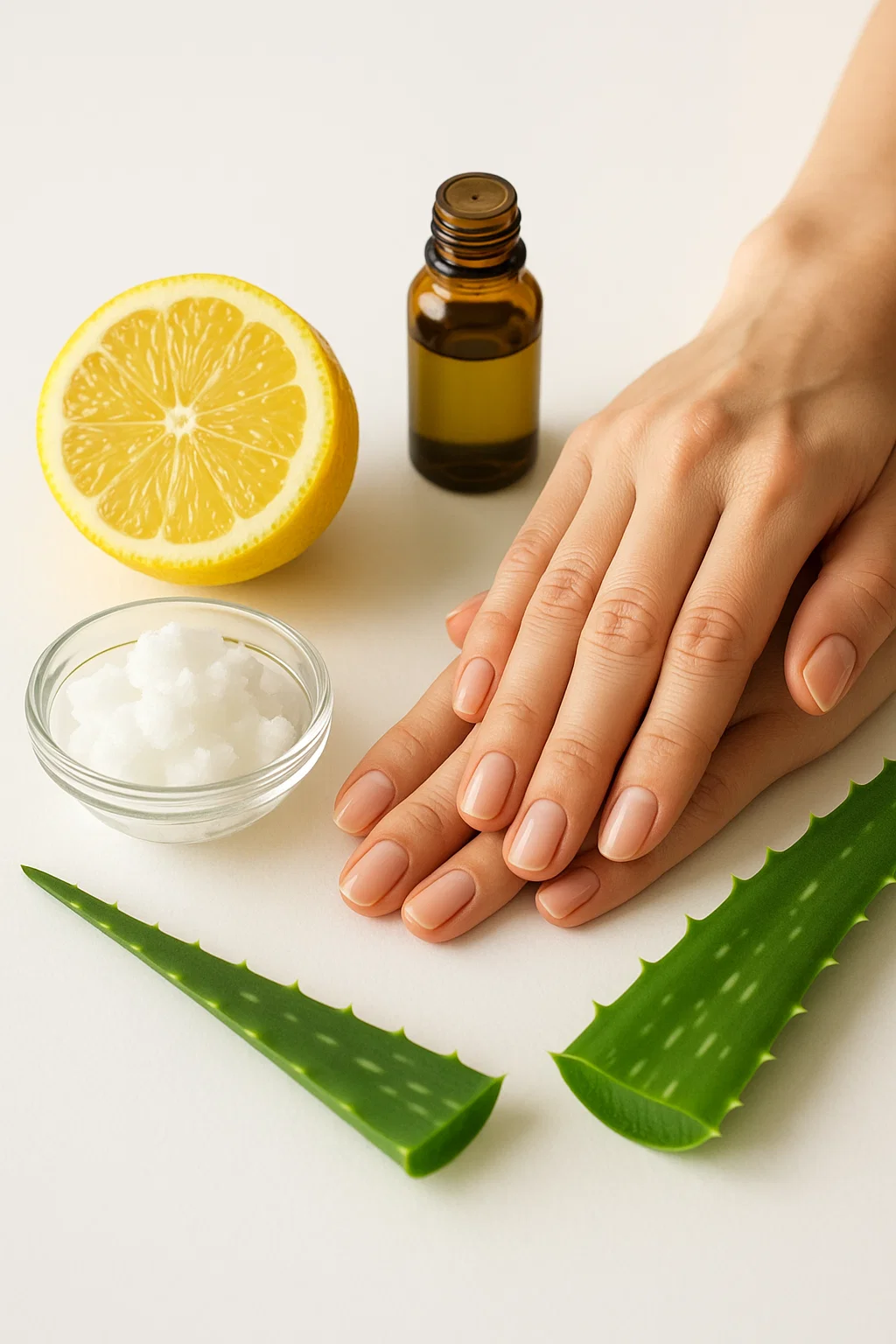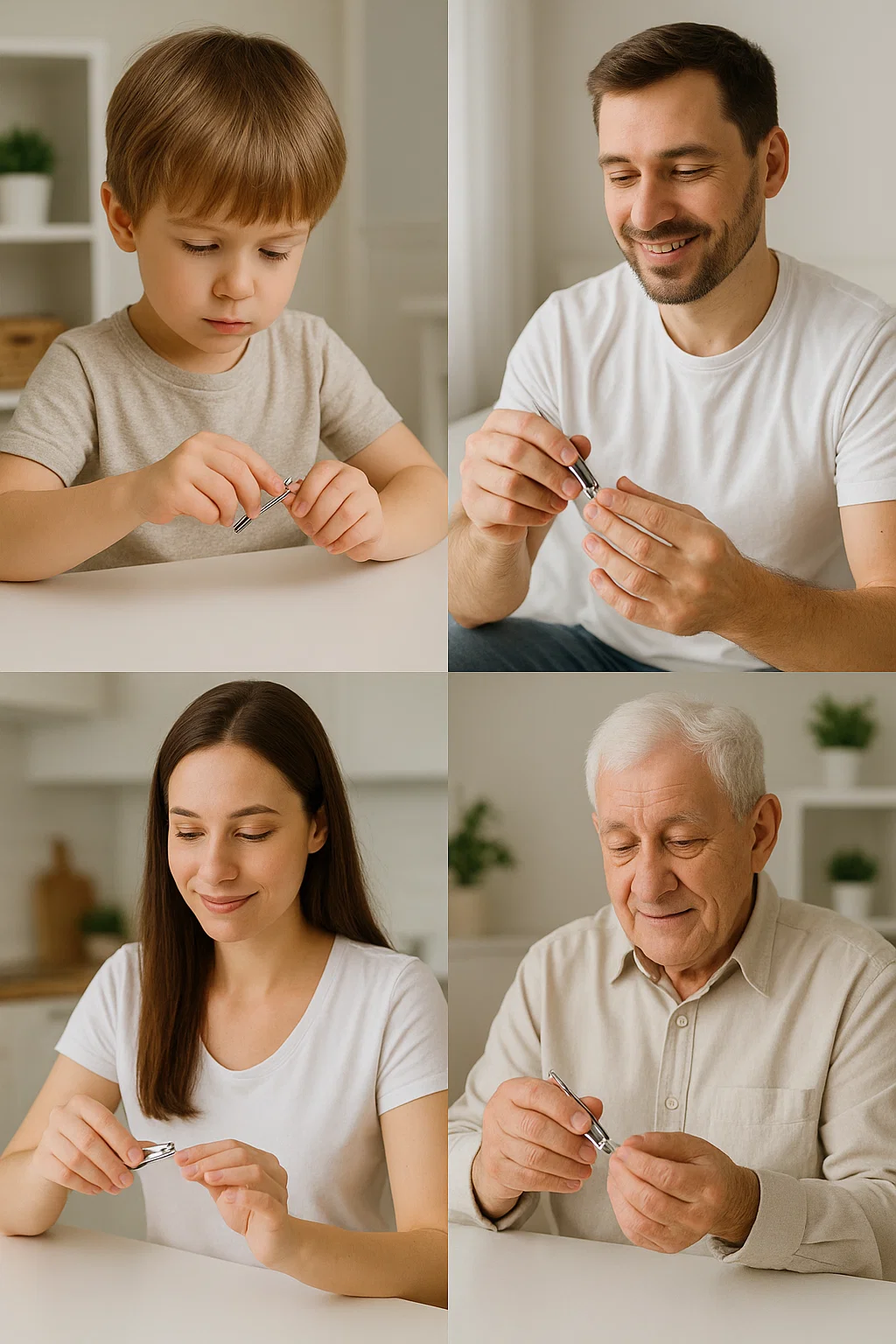Learn how to effectively clean under nails at home using proven, safe, and hygienic methods. Keep your nails tidy, healthy, and infection-free.
Whether you’re a parent juggling daily chores, a health professional focused on hygiene, or someone who simply wants to feel confident in their appearance, one small but mighty detail often gets overlooked—cleaning under your nails. While many of us diligently wash our hands multiple times a day, we rarely give the same attention to what lies beneath our fingernails and toenails. But did you know that this seemingly tiny spot can harbor a surprising amount of bacteria, dirt, and dead skin cells? Learning how to effectively clean under nails at home is not just a cosmetic practice; it’s an essential aspect of self-care and personal health.
Think about it. Our hands touch hundreds of surfaces daily—door handles, mobile phones, keyboards, kitchen utensils—and in the process, all kinds of microscopic contaminants make their way under our nails. If left unattended, this grime becomes a breeding ground for germs that can cause anything from minor irritations to serious infections. According to a 2022 report from the Centers for Disease Control and Prevention (CDC), pathogens like Staphylococcus aureus and E. coli are commonly found under fingernails, making this a public health issue that starts with personal responsibility.
The good news? You don’t need to run to a nail salon or invest in fancy tools to tackle the problem. With the right knowledge and some everyday items found in your home, you can keep your nails looking pristine and, more importantly, healthy. This comprehensive guide will walk you through every step of effective nail hygiene. From understanding why your nails get dirty in the first place, to discovering natural cleaning solutions, and finally to mastering a sustainable routine that fits seamlessly into your lifestyle—we’re covering it all.
In this post, you’ll not only learn how to effectively clean under nails at home, but also gain tips tailored to different needs: men, women, children, seniors, healthcare workers, and even gardeners and mechanics. We’ll also explore the best practices to prevent dirt buildup in the first place, what not to do, and when it’s time to seek professional help. No fluff—just practical, actionable insights backed by experience and science.
Why Clean Nails Matter: More Than Just Vanity
At first glance, the idea of scrubbing under your nails might seem like a purely cosmetic habit—one driven by appearances. But the reality goes far deeper. Clean nails are a reflection of your hygiene, your health, and even your lifestyle. In fact, many medical professionals, including dermatologists and infectious disease specialists, stress the importance of proper nail care as a first line of defense against infections. Simply put, clean nails are about much more than looking polished—they’re about staying safe and healthy.
Every time you eat with your hands, touch your face, or even type on a keyboard, you’re potentially transferring bacteria and other contaminants from your fingernails to other surfaces or into your body. Studies published in the Journal of Clinical Microbiology have shown that the subungual area (the space under the nail tip) is a perfect hiding spot for pathogens such as E. coli, Salmonella, and Staphylococcus aureus. These microbes can easily enter your system through food, the nose, eyes, or small cuts—leading to gastrointestinal illness, skin infections, or worse.
Moreover, unclean nails can contribute to fungal infections like onychomycosis, especially in the toenails, where moisture and tight footwear create a favorable environment for fungal growth. This condition not only discolors and thickens the nail but can also cause discomfort, embarrassment, and even long-term damage if not treated properly.
Understanding Nail Structure for Better Cleaning
To truly master how to effectively clean under nails at home, it’s essential to first understand the structure of your nails. Just like knowing the layout of a house makes cleaning it easier, understanding the anatomy of your nails helps you clean them more efficiently and safely. It also helps prevent common mistakes that can lead to irritation, infections, or even long-term nail damage.
Your nails are more than just hard coverings at the tips of your fingers and toes—they are complex structures made of multiple components, each serving a distinct function. Here’s a breakdown of the key parts of the nail and how each one impacts your nail hygiene routine:
Nail Plate
This is the visible, hard part of the nail made of keratin, the same protein found in your hair and skin. The nail plate doesn’t contain nerves or blood vessels, which is why it doesn’t hurt when you cut your nails. However, it’s also where dirt, oil, and bacteria can easily settle—especially underneath its free edge.
Free Edge
The white tip that extends beyond your fingertip is called the free edge. This is the area most prone to collecting dirt, food particles, dead skin, and other debris. When we talk about cleaning under the nails, we’re often referring to the area beneath the free edge. It’s a delicate zone—cleaning too aggressively here can damage the skin beneath (called the hyponychium), so gentle tools and proper technique are a must.
Hyponychium
This is the soft skin located just under the free edge of the nail. It acts as a barrier to keep pathogens out. When you clean under your nails, you want to be very careful not to damage this protective layer. Pushing objects too deep can cause pain, bleeding, or even an open pathway for bacteria and fungi.
Nail Bed
The nail bed lies beneath the nail plate and provides it with nutrients. It contains blood vessels and nerve endings, which is why it’s so sensitive. While you don’t typically clean the nail bed itself, trauma or improper nail care can expose or irritate it.
Cuticle
Often mistaken as just dead skin, the cuticle is a protective seal that lies where the skin of your finger meets the nail plate. It prevents bacteria from entering the area where new nail cells are formed. Damaging or removing cuticles during cleaning or grooming can lead to infections like paronychia. Instead, it’s better to gently push them back after softening with warm water or oil.
Why Dirt Accumulates Under Nails
Even the most hygiene-conscious individuals are not immune to the constant buildup of debris under their nails. But why does dirt accumulate under nails, and what exactly is that “gunk” made of? To answer that, we need to look at a combination of biological, environmental, and lifestyle factors that all contribute to this common hygiene issue.
Let’s break down the major reasons:
1. Constant Exposure to Surfaces and Particles
Your hands are in perpetual motion—typing, cooking, gardening, handling money, grooming pets, and so much more. Every surface you touch carries microscopic particles, many of which find their way under your nails. The nail’s free edge naturally curves slightly over the hyponychium, creating a small pocket that traps these particles.
This debris includes:
-
Skin cells
-
Dirt
-
Dust
-
Oils
-
Food remnants
-
Environmental pollutants
These materials don’t just make your nails look dirty; they can also be a breeding ground for bacteria and fungi.
2. Natural Nail Anatomy
The structure of your nails actually encourages debris accumulation. The space beneath the free edge is warm and slightly moist—ideal conditions for microbial growth. This area is not exposed to regular friction or washing, which is why dirt can stay lodged there even after you’ve washed your hands.
Longer nails or artificial nail enhancements like acrylics and gels make it even easier for grime to get trapped and harder to clean.
3. Poor Nail Hygiene Habits
Skipping proper nail care, such as not scrubbing under the nails during handwashing, allows buildup to persist. Even if you wash your hands frequently, if you’re not using a nail brush or similar tool, debris remains stuck.
Bad habits like biting nails, picking at skin, or frequently touching the face or mouth introduce even more oils and bacteria to the nail bed area. These habits can not only make your nails dirty but also increase the risk of infection.
4. Sweat and Sebum Production
Your fingers contain sweat glands and oil-producing sebaceous glands. Sweat and sebum (natural skin oil) can combine with external dirt and dead skin, creating a sticky residue that clings under the nails. This is particularly noticeable in hot or humid climates or after exercise.
5. Handling Food and Greasy Substances
Cooking, eating finger foods, or handling greasy items often leaves behind particles under your nails—especially if you’re working with spices, oils, or raw meats. These organic materials decompose quickly and can begin to emit an unpleasant odor if not cleaned properly.
Essential Tools to Clean Under Nails at Home
Cleaning under your nails may seem straightforward, but using the right tools makes all the difference between effective hygiene and potential damage. Whether you’re maintaining your everyday cleanliness or tackling a particularly dirty job, having the essential tools to clean under nails at home ensures you can safely and efficiently remove buildup, prevent infection, and maintain healthy, polished hands and feet.
Let’s dive into the must-have nail cleaning tools, many of which you likely already have in your bathroom cabinet or kitchen drawer.
1. Soft-Bristle Nail Brush
A soft-bristle nail brush is your number one ally in nail hygiene. Designed specifically to scrub under and around the nails, these brushes loosen dirt, oils, and bacteria lodged beneath the free edge. Choose a brush with:
-
Soft, flexible bristles (to avoid damaging the nail bed)
-
A compact, ergonomic handle for a secure grip
-
Bristles that are firm enough to clean but gentle on skin
Use it daily with warm water and soap for best results. You can also find double-sided brushes—one side for nails, one side for cuticles or toes.
2. Orangewood Stick or Toothpick
Sometimes, gentle precision is necessary—especially for stubborn grime. An orangewood stick (also called a cuticle stick) is a thin, pointed wooden tool used to safely clean under the nail without causing trauma. Unlike sharp metal tools, it’s flexible and won’t damage the hyponychium.
To use:
-
Soak your hands in warm, soapy water to soften debris.
-
Gently slide the stick under the nail tip and lift out dirt.
-
Disinfect the stick after use or dispose if single-use.
Toothpicks can work in a pinch but must be used carefully to avoid splintering or applying too much pressure.
3. Bowl of Warm, Soapy Water
Before using any tool, always begin with a soak. Warm water softens the skin and loosens buildup under the nails. Add a mild antibacterial soap or a few drops of tea tree oil or lemon juice to the water to enhance its cleansing power.
Soaking tips:
-
Soak for 5–10 minutes before scrubbing.
-
Use lukewarm water to avoid drying out skin.
-
Ideal for both fingernails and toenails.
You can enhance your soak with ingredients like baking soda or Epsom salt to help with whitening and softening.
A Simple Daily Nail Hygiene Routine
Include these quick steps in your daily hygiene:
-
Wash hands with soap and water
-
Scrub under nails using a nail brush
-
Rinse thoroughly and pat dry
-
Apply moisturizer or cuticle oil
A daily 2-minute ritual keeps buildup away.
How to Effectively Clean Under Fingernails
Here’s a safe and effective method:
-
Soak hands in warm, soapy water for 5 minutes
-
Use a soft brush to gently scrub under nails
-
Dislodge stubborn dirt with a toothpick or orange stick
-
Rinse and dry thoroughly
-
Apply hand cream or oil
Avoid sharp tools—they can damage the nail bed.
How to Effectively Clean Under Toenails
Feet often get neglected. Follow these steps:
-
Soak feet in warm water and Epsom salt
-
Use a nail brush to scrub gently
-
Clip and file nails to reduce crevices
-
Push back cuticles gently
-
Moisturize to prevent cracking
Wearing breathable socks and shoes helps, too.
DIY Nail Soaks for Natural Cleaning
Try these at-home solutions:
| Ingredient | Benefit | Instructions |
|---|---|---|
| Lemon juice | Natural bleach | Soak for 5 mins |
| Baking soda | Mild exfoliant | Mix with water and scrub |
| Apple cider vinegar | Antibacterial | Soak for 10 mins |
| Tea tree oil | Antifungal | Add 2 drops to soak |
Avoid These Common Nail Cleaning Mistakes
-
Using metal tools under nails
-
Peeling nails instead of trimming
-
Ignoring signs of infection
-
Skipping nail drying—moisture fosters bacteria
Natural Remedies for Clean Nails
Nature has your back. These ingredients help without harsh chemicals:
-
Lemon for stain removal
-
Coconut oil for hydration
-
Tea tree oil for disinfection
-
Aloe vera for healing
Nail Hygiene Tips for Specific Groups
For Kids:
Keep nails short, discourage nail-biting, and wash after playtime.
For Men:
Focus on toenail hygiene, especially for gym-goers.
For Women:
Balance between beauty and cleanliness—clean under acrylics and polish with care.
For Seniors:
Dry skin and brittle nails need extra moisture and gentle care.
Cleaning Under Nails for Specific Professions
Healthcare Workers:
Use a nail brush before and after shifts. Short nails reduce contamination risk.
Gardeners & Mechanics:
Apply petroleum jelly before work to reduce dirt adherence. Clean immediately after.
Preventing Nail Dirt in the First Place
-
Keep nails trimmed
-
Moisturize daily
-
Wear gloves when needed
-
Avoid biting nails or picking at cuticles
How Often Should You Clean Under Nails?
Daily is ideal, but at minimum:
-
Fingernails: Every day or every time you wash your hands
-
Toenails: At least 2–3 times a week
Best Nail Cleaning Products to Try
-
Dr. Bronner’s Castile Soap – gentle and effective
-
Tweezerman Nail Brush
-
Olive & June Cuticle Serum
-
Gehwol Med Nail Softener for toenails
In the grand scheme of personal care, nail hygiene might seem like a minor detail. But as we’ve explored throughout this guide, learning how to effectively clean under nails at home is far more impactful than it appears. It’s not just about aesthetics—it’s about protecting yourself and others from the harmful effects of bacteria, fungi, and everyday grime that hides beneath your nails.
Nail cleanliness is a reflection of self-respect and attention to detail. Whether you’re shaking hands at a job interview, prepping food for your family, caring for patients, or simply scrolling through your phone, the state of your nails says more about you than you think. Infections can start in the tiniest places, and under your nails is one of the most overlooked yet vulnerable spots on your body.
By incorporating a few extra minutes into your daily routine—soaking, brushing, moisturizing, and trimming—you’re not just grooming; you’re actively defending against illness, discomfort, and even social stigma. You’ve also now learned that tools like a soft nail brush, orangewood stick, and natural soaks like lemon or vinegar can do wonders for both cleanliness and nail health.
Remember, long-term results stem from consistent effort. It doesn’t take a salon visit or expensive products to keep your nails clean and presentable. With regular care and mindfulness, your nails can stay tidy, healthy, and beautiful every single day.
FAQs
How do I safely clean under my nails without causing damage?
Use a soft-bristle nail brush or an orangewood stick after soaking your nails in warm soapy water. Avoid using sharp metal tools that can injure the nail bed or hyponychium.
Can I clean under my nails every day?
Absolutely. In fact, daily cleaning is recommended—especially after cooking, gardening, or using the restroom. Gentle daily maintenance prevents buildup and reduces the risk of infection.
Is it okay to use hydrogen peroxide or rubbing alcohol under nails?
Hydrogen peroxide can be used in diluted form for occasional cleaning, especially to whiten nails or disinfect. However, daily use is not advised as it may dry out the nail and skin.
What if I have acrylic or gel nails—how do I clean under those?
Be extra gentle. Use a soft nail brush and antibacterial soap to clean around and under the extensions. Avoid digging with tools, as this can lift the nail and lead to infections.
Why do my toenails get dirtier than my fingernails?
Toenails are often enclosed in dark, moist environments like socks and shoes—ideal for trapping sweat, dead skin, and debris. Regular soaking, trimming, and breathable footwear help maintain cleanliness.
When should I see a doctor about nail issues?
If you notice persistent pain, swelling, redness, pus, foul odor, discoloration, or thickening of the nails that doesn’t improve with at-home care, consult a dermatologist or podiatrist. These could be signs of a fungal or bacterial infection.

